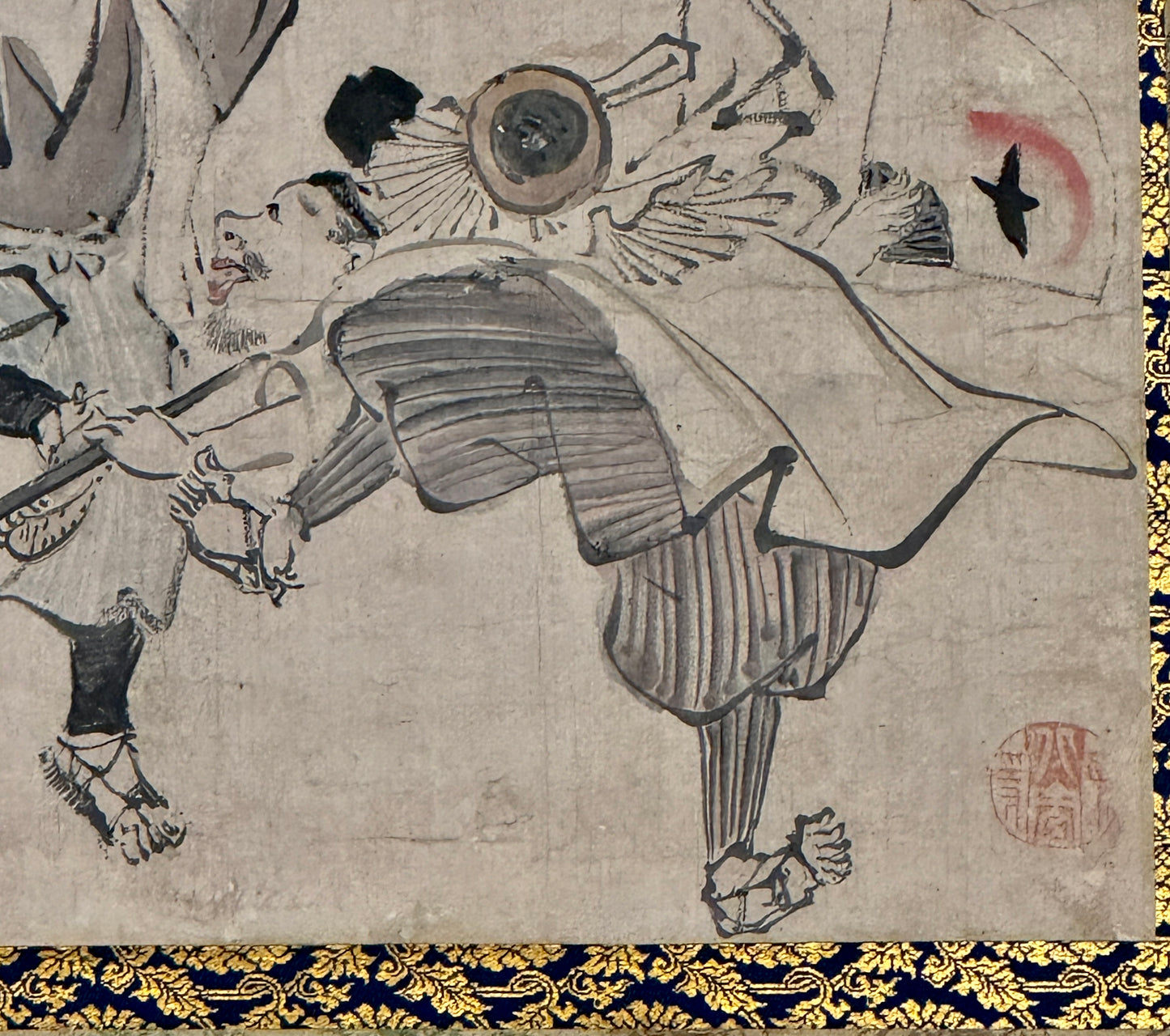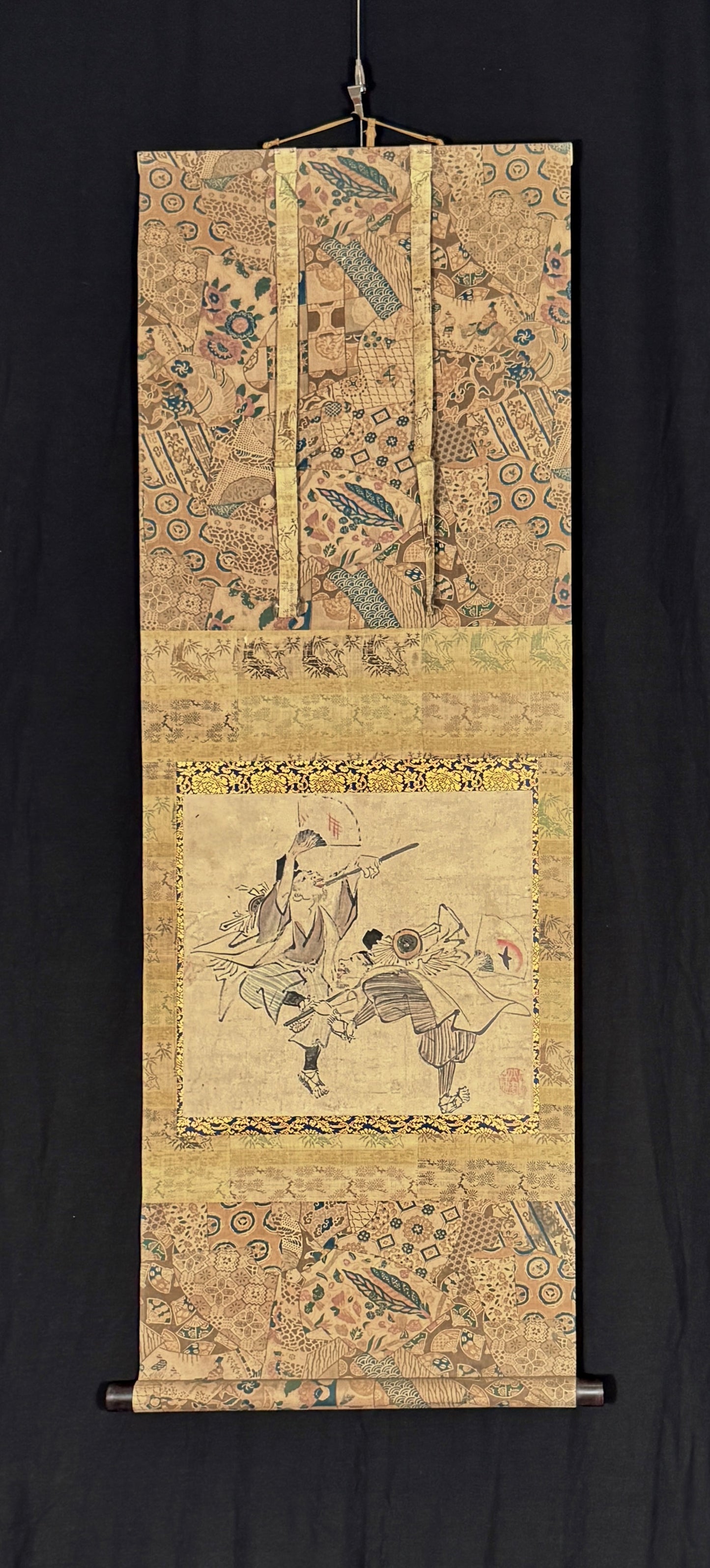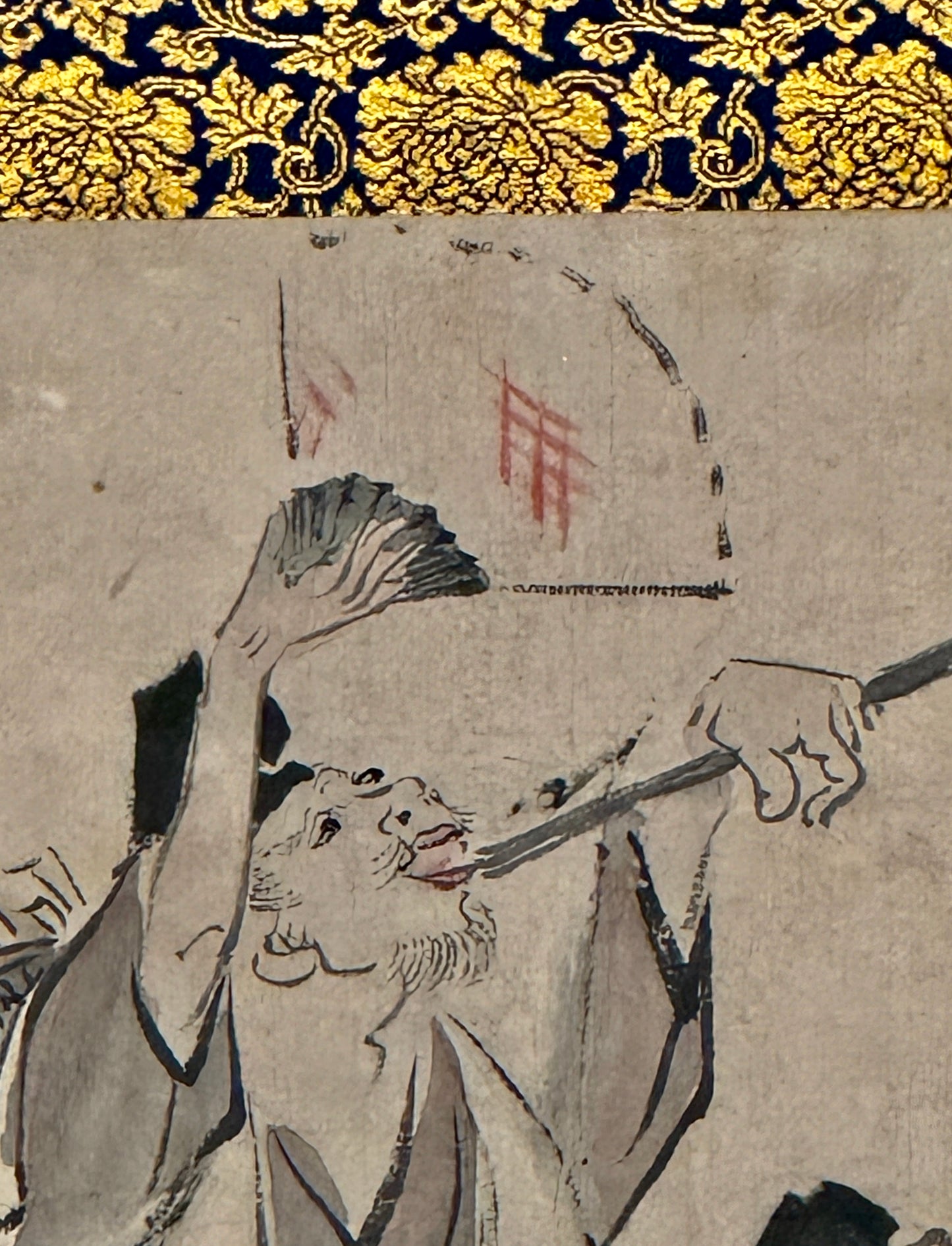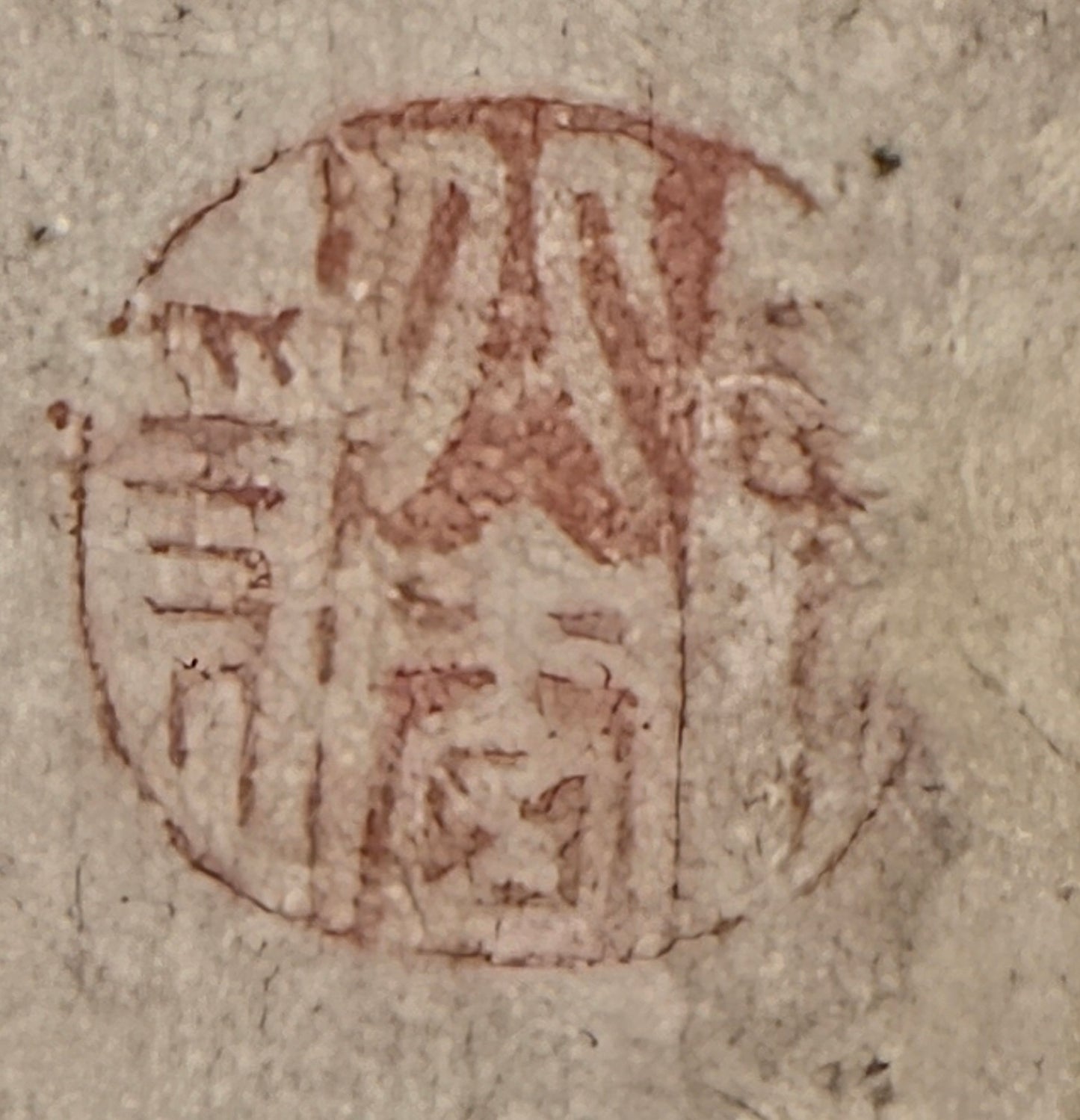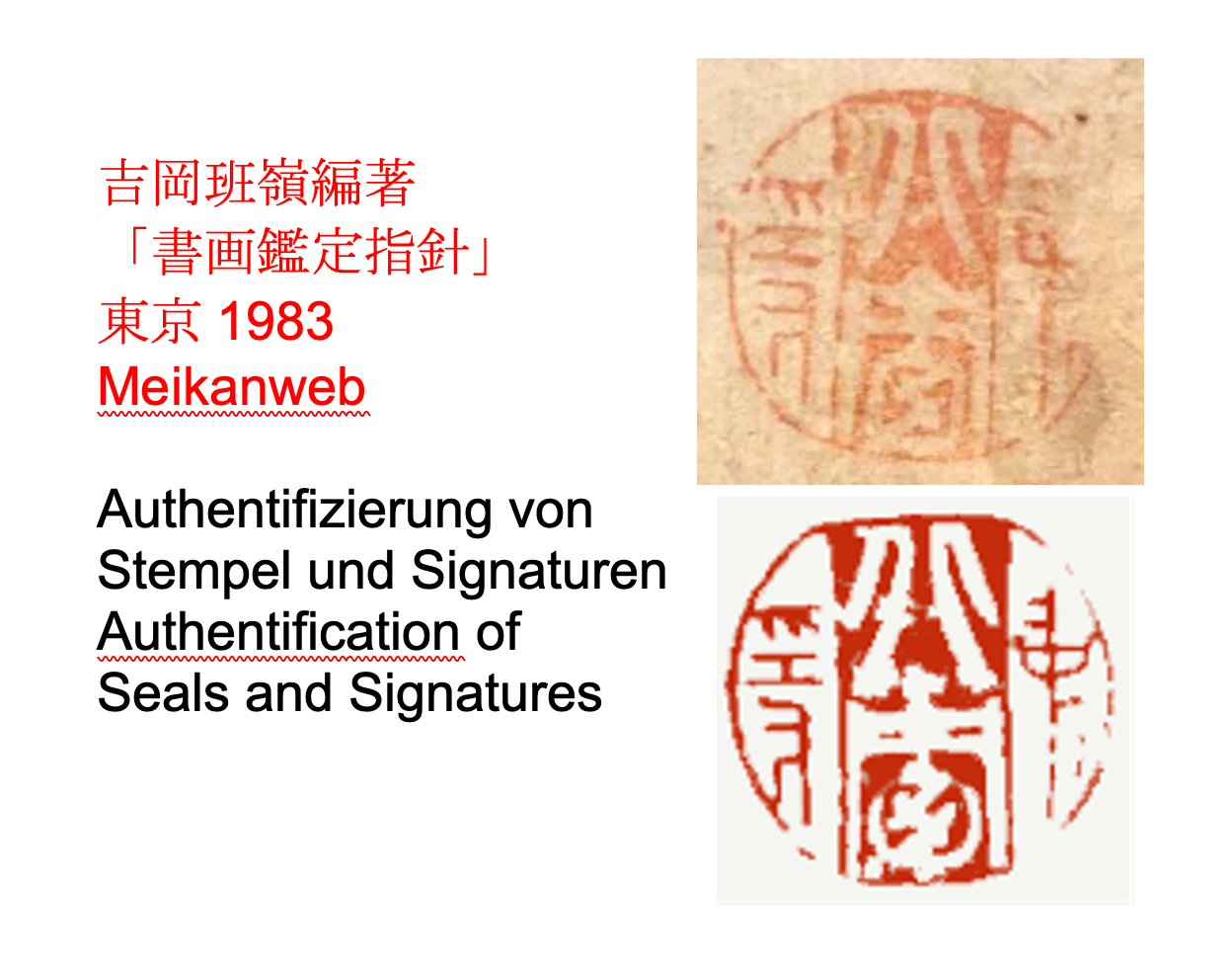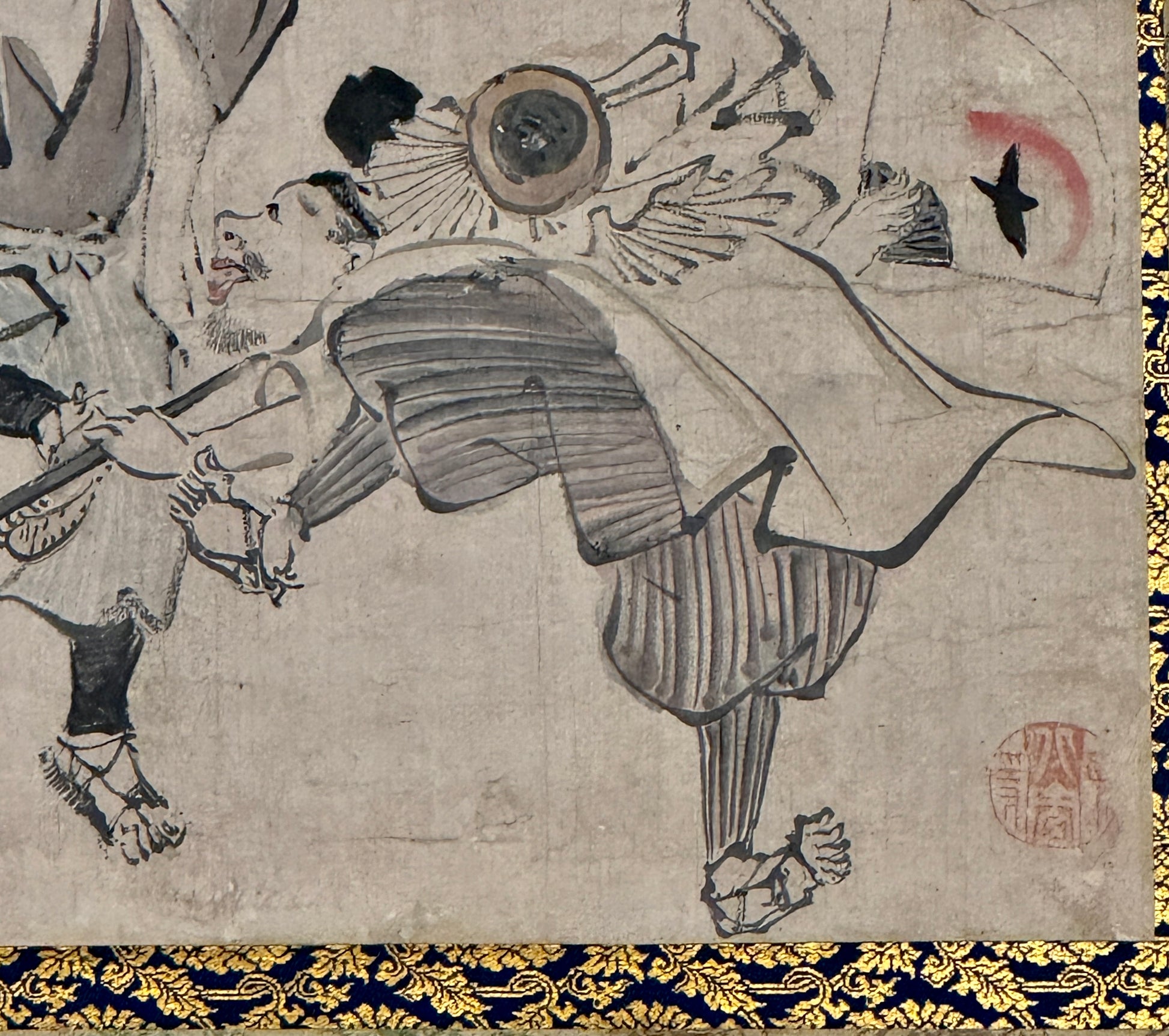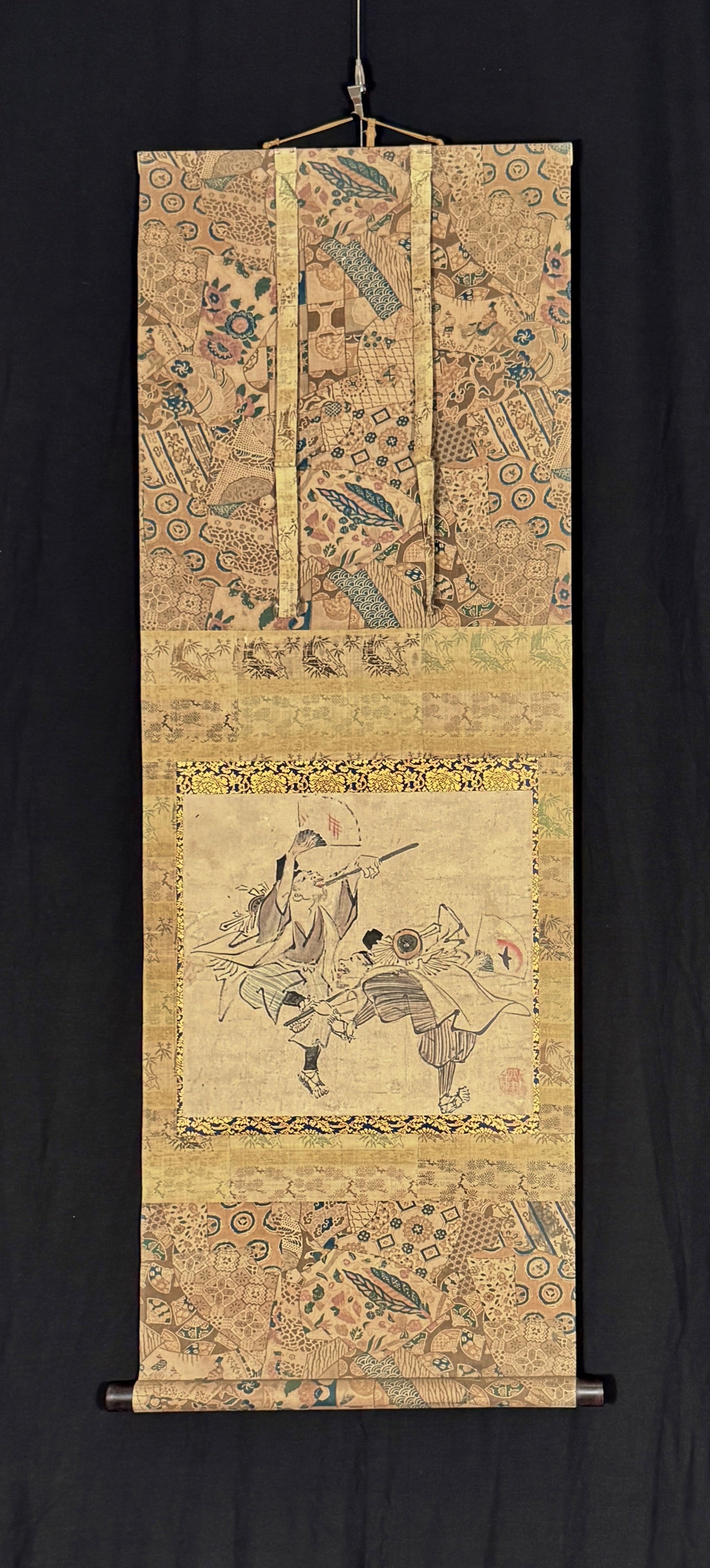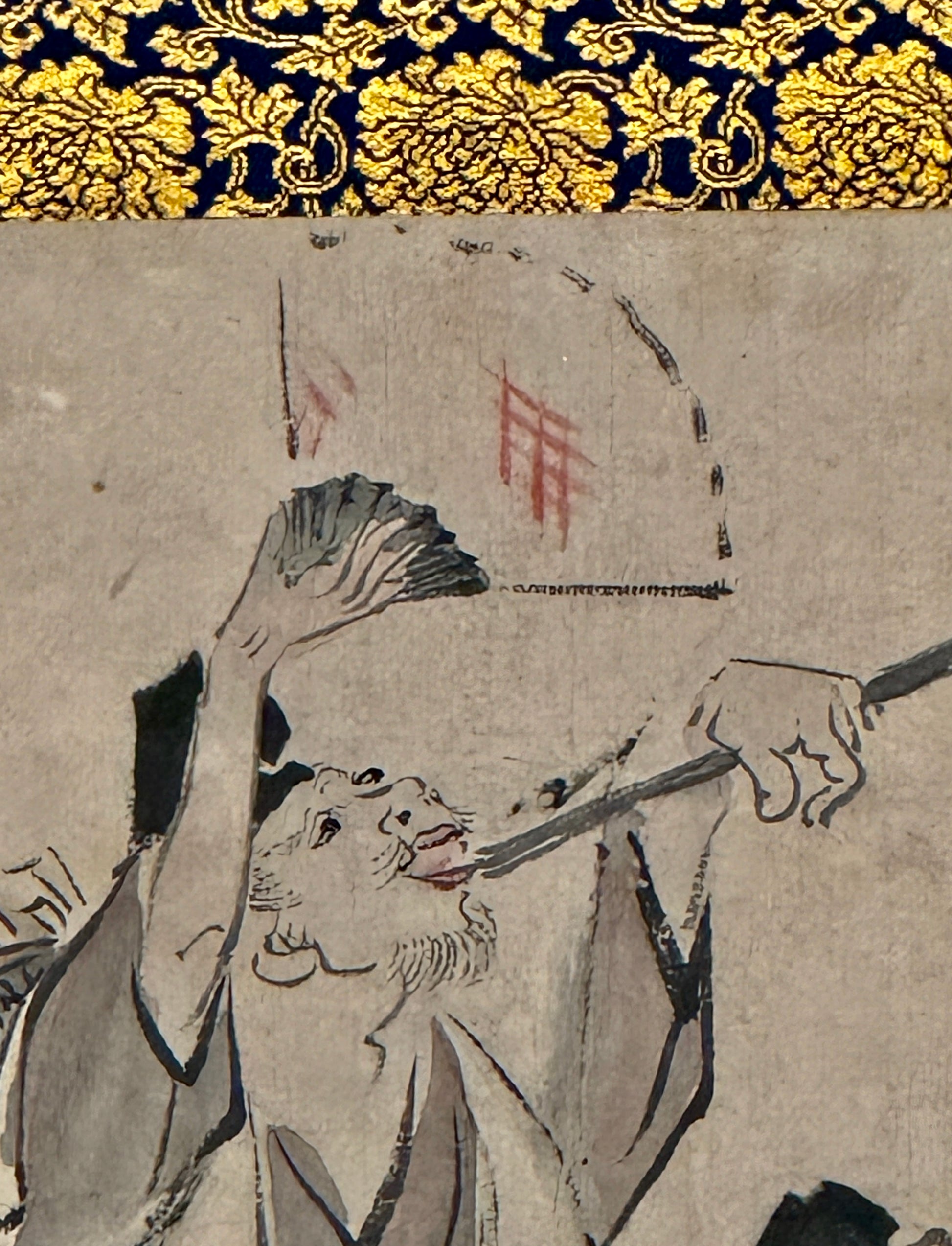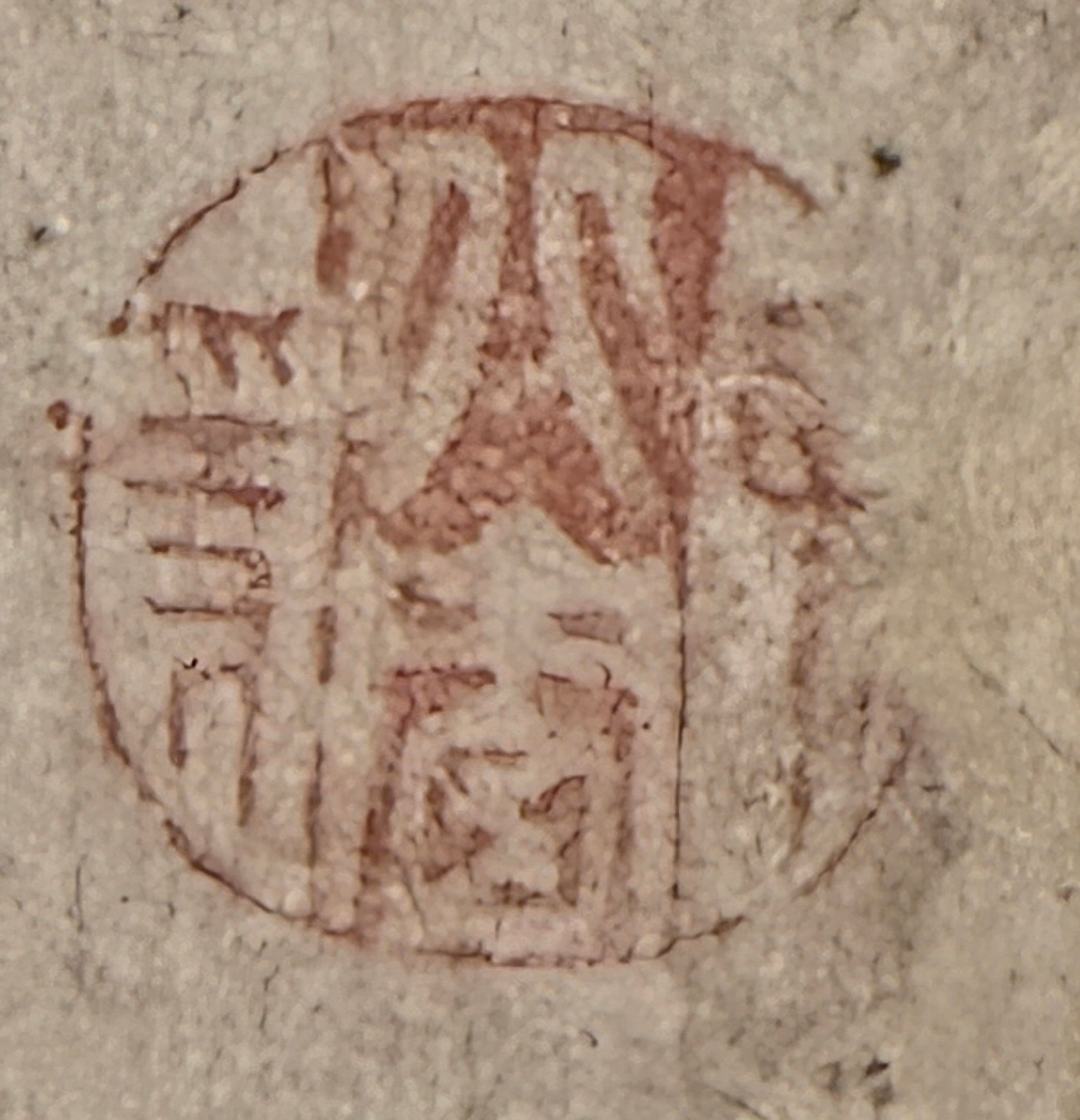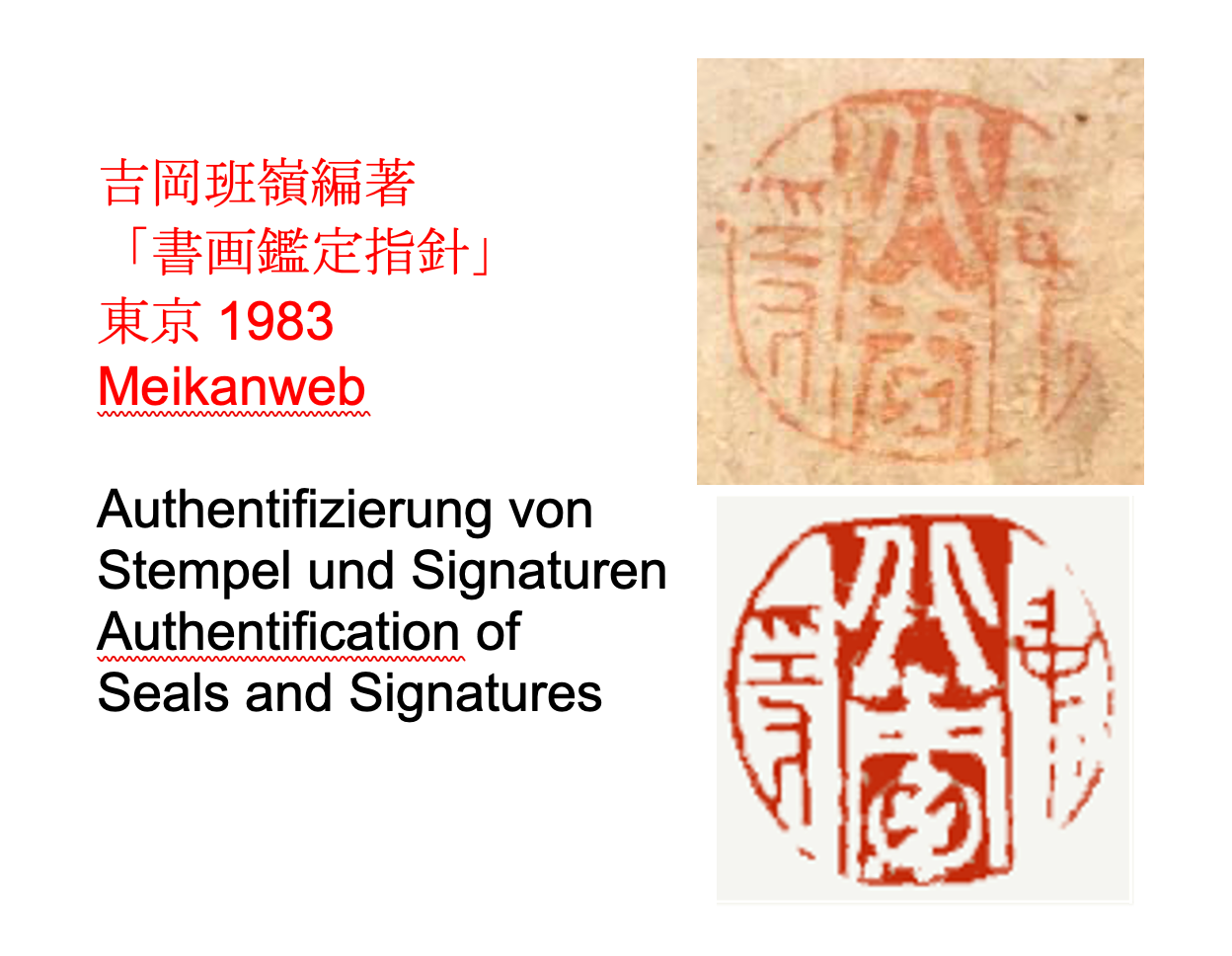Guignard Kyoto Collection
Banzai Dancers | Hanabusa Itchō 英一蝶 | 1652-1724
Banzai Dancers | Hanabusa Itchō 英一蝶 | 1652-1724
Couldn't load pickup availability
Even today, you can still see Banzai dancers in rural areas, especially in northern Japan, on New Year's Day. This is usually a pair of two dancers/singers who go from door to door, singing songs that bring good luck and dancing to them. They are usually given rich gifts by the residents of the house, who stand on the threshold and listen to the entertainment. "Banzai" is still a common cry today, and is the closest thing to "Hurrah" in English. It is shouted to congratulate at sporting events or to celebrate the emperor.
Itchō stands out in Japanese art history in several respects. If you read his biography, a Westerner would say: "Yes, that's just how artists are." Itchō did not recognize any authority - he was sent into exile for a time for insulting a Shogun's mistress, he was chased out of a monastery as a boy and was thrown out of the studio of a Kanō master. He led the life of a pleasure-loving bohemian throughout his life.
Many of his paintings show people in extreme emotional states such as fear, joy and anger. Here two banzai dancers are moving in a completely exalted manner. At his time, such expression was very unusual in Japanese painting.
This expressionism correlates with the original, unusually exuberant mounting of the scroll painting with elaborately printed and embroidered silk and cotton fabrics.
